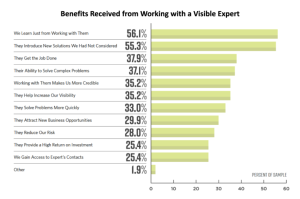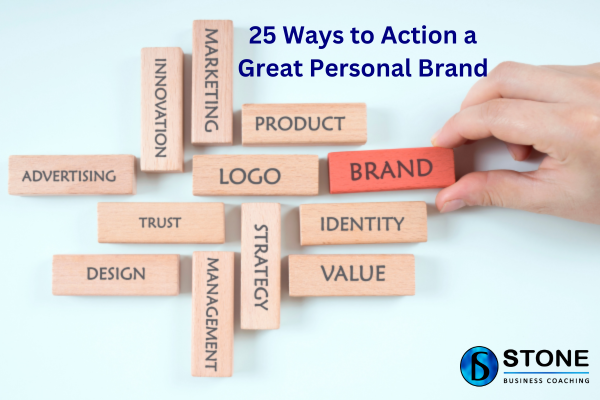Just like businesses have a brand, some individuals do as well. Personal branding is used in many instances; perhaps to compliment a business brand (like Sir Richard Branson and Virgin), or perhaps used to advance your career, used by politicians, performers, and frequently used by consultants, advisors and coaches. Often in fact, the personal brand and business brand somewhat blend, particularly when you’re the ‘face’ of the business.
In this article, I’m going to talk about what personal branding is, how it can benefit you (and its importance) and then give you 25 practical and real-life tips on how to set up and maximise your own personal brand.
What is Personal Branding?
Personal branding is how one markets oneself. It will cover their experience, knowledge, achievements, expertise as well as other things, such as popularity. Like with business branding, personal branding helps you stand out from your competition. It helps you be seen, recognized and even sought after. It may well represent (and communicate) what you stand for, beliefs, passions, and values.
General business branding is more than a logo, fonts and colours. It incorporates values, messaging – the look, feel and message that you want to portray. So, goes with personal branding. It’s not just one or the other, but both. One important aspect of all branding is consistency. But before you can be consistent, you need to develop your brand, document it and then use it in every instance. It instills confidence.
Your personal branding will be on:
- All your marketing
- Blogs
- LinkedIn profile
- All social media profiles, website – in fact all things online which are about you
- If you present, branding should be on every PowerPoint and every handout.
As I said, it will incorporate both visual and messaging. It will likely communicate what you believe in, what’s important to you, values, but also it’s the packaging and presentation. Colours play a big part in branding and the feng shui of colour. For example, I have chosen blue myself. I love the colour, but also it represents calmness, stability, security, inspiration and wisdom. It is also gender neutral; as a business coach it appears to men and women alike.
How you dress, your photography and visuals can be professional, fun, on-the-edge, adventurous, conservative, or much more. When selecting your personal branding think about who you’re reaching out to and who you want to attract. If you wanted to engage with what is often a traditional industry (such as engineers, lawyers, universities) then you wouldn’t use the sexy/provocative approach, but a somewhat more conservative approach. Now, I’m not saying there are some ‘out there’ lawyers or engineers. How do you want to come across?
Branding, personal or business – tells others who you are, what you’re about.
Why is Personal Branding Important?
- Draws attention to you and your achievements
- Helps you stand out from the crowd and shares your uniqueness
- Grows your reputation – hopefully in a positive way
- Lends credibility to your business brand
- Can elevate your income
- Can help improve your career or political position
- May lead to opportunities
- Can give the person considering you, or engaging your services a sense of trust and belief you can complete the job. Though naturally, you need to be able to do the job!
- Assists potential buyers in their screening process; most people check us out online first.
- It helps to bolster your online presence
- Improves online perception of you
- Others benefit from working with an expert – so remember to communicate that
- Allow you to showcase your expertise and skills.

Courtesy www.hingemarketing.com
25 Practical Tips You Can Action For Your Own Personal Branding!
- Consider your goal for your brand and how specifically that goal might be achieved.
- Do your research and create your own personal branding statement.
- Seek assistance where suitable; it might be a Business Coach / Life Coach, like myself, or a brand consultant, marketer or industry expert.
- If you’re aiming for expertness; consider perhaps writing a book, presenting, Awards etc.
- Build your brand, including development of your branding strategy.
- Incorporate colours, message, expertise … basically the content which communicate your expertise or message.
- Have a communication plan; whether that’s essentially a marketing plan and schedule of when you will post, or perhaps policies and guidelines around your messaging – or both.
- Think about how you will handle anything negative. Potentially writing responses to negative feedback is good to do in advance. You should never respond in the heat of the moment or in a way which doesn’t represent you ideally.
- Set some KPIs. It might be positive reviews, or number of articles you post, or number of events, or number of likes etc. Anything which can be measured can be setup as a KPI.
- Get professional photos done. Once you know your brand and communicate with your photographer, they will hopefully capture that brand. A professional photographer will ensure lighting is right and messaging. But be sure to communicate with them your brand; if you’re aiming for approachable and friendly, then stiff and glitzy photos may not be congruent.
- In photography remember your brand colours; it may be useful to wear (as in my case) a blue jacket or perhaps a business branded shirt, if that’s appropriate.
- Create short bios (for provision to blogs, presentations or other occasions) which mirrors your brand.
- Put your branding on everything you put out – from PowerPoint to blog footers.
- Ensure your profiles (LinkedIn, social media etc) mirror your brand and its messaging.
- Have (and offer) great free resources online.
- Chase personal reviews and testimonials; LinkedIn or Google Reviews are great for this.
- Do guest blogs – if not asked, initially offer
- Podcasts also can be great; again, offer if you’re not being asked.
- Do an online audit. Google yourself and see what you see. If there is something which doesn’t mirror your brand, message or how you want to be perceived; work to remove it.
- Be authentic and provide value in what you put out there. Don’t just be ‘noise’.
- Be social and engage. Putting content out there is one thing; but you need to be present also.
- Don’t forget to take a break. Being in the spotlight can be draining, so in order to not come across in the wrong way (because you’re tired or worn out), take breaks – so when you are viewed, people see the best you.
- Consider friends/family. I know some clients say they don’t want to have their business on Facebook because their friends are silly, or perhaps friends might be inclined to post a photo which isn’t appropriate. Definitely don’t yourself! Have an agreement with friends and family about what gets posted. If you know you can’t trust your friends to do the right thing, well either don’t relax in front of them, or perhaps it’s time to find true friends. Just saying 😊
- Be consistent. If you post once a week, do it once a week, ideally at the same/similar time and day. If you post on LinkedIn, then do so regularly. Remember to consistently use your visual branding and the same messaging. I also never swear, which is part of my own branding, so even if I swear, it will be something like ‘sh*t’ that I would write and I’d never swear in a video or Live.
- Review and audit your branding regularly. Have you swayed from the message; is there something online which isn’t right. Measure success regularly.
If you’d like any help with your personal branding, messaging or generally life or business coaching, please feel free to reach out to me at my contact page – my passion is your potential!






